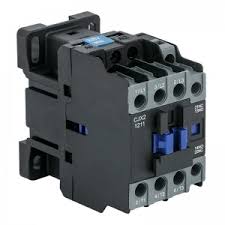Navigating the Inner Workings: A Comprehensive Guide to the Components of an Air Circuit Breaker (ACB)

Strong 8k brings an ultra-HD IPTV experience to your living room and your pocket.
Introduction:
In the realm of electrical engineering, safety and efficiency are https://www.dvolt-electric.com/products-59236 paramount concerns. Among the myriad devices employed to ensure these principles, the Air Circuit Breaker (ACB) stands as a stalwart guardian, regulating the flow of electricity and safeguarding against potential hazards. Understanding its intricate components is not only crucial for engineers but also for anyone working with electrical systems. In this comprehensive guide, we embark on a journey through the various elements that constitute an Air Circuit Breaker, shedding light on their functions, importance, and interconnections.
The Essence of an Air Circuit Breaker:
Before delving into its components, it's imperative to grasp the fundamental purpose of an Air Circuit Breaker. Essentially, an ACB is a mechanical switching device that controls the flow of electrical current in a circuit. It acts as a safety mechanism, interrupting the power supply in case of overload, short circuit, or any other fault condition. Unlike its counterparts, such as the Miniature Circuit Breaker (MCB) or Molded Case Circuit Breaker (MCCB), an ACB is designed to handle higher currents and voltages, making it suitable for industrial and commercial applications.
Core Components:
a. Contacts:
At the heart of every ACB lie the contacts, serving as the primary means of electrical connectivity. These contacts, typically made of copper or silver, come into contact or separate under the influence of mechanical force, allowing or inhibiting the flow of current. The integrity of contacts directly influences the breaker's performance, warranting regular inspection and maintenance.
b. Arc Chutes:
One of the distinguishing features of an ACB is its ability to extinguish the electric arc that forms during circuit interruption. Arc chutes play a pivotal role in this process by creating a path for the arc to follow. By employing a series of metallic plates or fins, arc chutes facilitate rapid cooling and deionization of the arc, ensuring safe and efficient interruption of the circuit.
c. Operating Mechanism:
The operating mechanism of an ACB is responsible for initiating the opening and closing of contacts. Depending on the design, this mechanism can be manual, spring-operated, or motor-driven. Spring-operated mechanisms are particularly common in high-power applications, offering swift and reliable operation in response to fault conditions.
Protective Features:
a. Thermal Overload Protection:
To safeguard against excessive heat buildup, ACBs are equipped with thermal overload protection devices. These devices monitor the current passing through the circuit and trip the breaker if it exceeds the predetermined threshold for a specified duration. This feature prevents damage to the electrical equipment and mitigates the risk of fire.
b. Short Circuit Protection:
In the event of a short circuit, where an abnormally low impedance path is created, ACBs must act swiftly to isolate the fault. Short circuit protection mechanisms, often integrated into the breaker, detect the sudden surge in current and trigger the tripping mechanism, halting the flow of electricity and preventing damage to the system.
Auxiliary Components:
a. Shunt Trip:
A shunt trip is an auxiliary device used to remotely trip the ACB under predetermined conditions. It consists of an electromagnetic coil that, when energized, releases the latch mechanism, causing the contacts to open. Shunt trips find application in automated systems and emergency shutdown procedures, enhancing the overall safety and control of the circuit.
b. Under Voltage Release (UVR):
Under Voltage Release is another auxiliary device designed to prevent unintentional closure of the ACB under low voltage conditions. By monitoring the supply voltage, UVR ensures that the breaker remains open when the voltage falls below a certain threshold, averting potential damage to equipment and personnel.
Conclusion:
In the intricate tapestry of electrical engineering, the Air Circuit Breaker emerges as a beacon of reliability and safety. Its myriad components work in concert to regulate the flow of electricity, protect against faults, and ensure uninterrupted operation of industrial and commercial systems. By understanding the nuances of its construction and function, engineers and technicians can wield the ACB with precision, fostering a safer and more efficient electrical environment. As technology evolves and challenges arise, the ACB remains a steadfast companion, empowering us to navigate the currents of innovation with confidence and competence.
Note: IndiBlogHub features both user-submitted and editorial content. We do not verify third-party contributions. Read our Disclaimer and Privacy Policyfor details.







